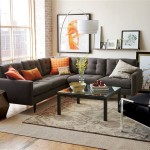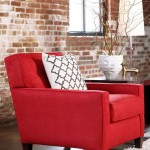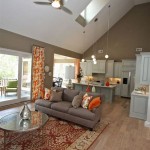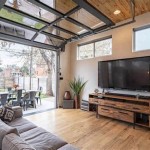Making A Bedroom In The Living Room: A Comprehensive Guide
Dividing a living room to create a functional bedroom can be a necessity due to space constraints, changes in living arrangements, or the desire for increased privacy. Successfully executing this transformation requires careful planning, creative solutions, and a clear understanding of spatial design principles. The goal is to create a distinct, comfortable, and aesthetically pleasing sleeping area that doesn't compromise the functionality or appearance of the remaining living space. This article will outline the key considerations and practical strategies for effectively partitioning a living room to establish a separate bedroom.
Assessing Needs and Planning the Space
Prior to any physical alterations, a thorough assessment of needs and a well-defined plan are essential. This involves evaluating the available space, identifying the specific requirements for the bedroom area, and considering the impact on the overall living room environment. Factors such as the size and shape of the living room, the location of windows and doors, and the availability of natural light should all be taken into account.
The first step is to determine the desired size and layout of the bedroom area. Consider the essential furniture that will need to be accommodated, such as a bed, nightstand, dresser, and any other storage solutions. It is crucial to maintain a sense of balance and avoid creating a bedroom that dominates the entire living room. Aim for a proportion that allows both spaces to function effectively.
Furthermore, analyze the existing lighting conditions. Is there sufficient natural light in the living room, and will the partition obstruct it? Consider supplementing with artificial lighting, such as lamps or overhead fixtures, to ensure adequate illumination in both the living room and the newly created bedroom. The placement of electrical outlets is also a critical factor. Ensure that there are enough outlets within the bedroom area to accommodate essential appliances and electronics. If necessary, consider hiring an electrician to install additional outlets.
Privacy is a paramount concern when creating a bedroom within a living room. Evaluate the level of visual and auditory privacy required. This will influence the choice of partitioning methods and materials. For example, a solid wall will provide the highest level of privacy, while a curtain or screen may offer a more flexible and less intrusive solution.
Finally, consider the aesthetic integration of the new bedroom area with the existing living room décor. The chosen partition should complement the overall style and color scheme of the room. This will help to create a cohesive and harmonious living space.
Partitioning Strategies: Options and Considerations
Several strategies can be employed to physically separate the bedroom area from the living room, each with its own advantages and disadvantages. The choice of partitioning method will depend on factors such as budget, desired level of privacy, and aesthetic preferences.
Permanent Walls: Constructing a permanent wall offers the highest degree of privacy and sound insulation. This option involves building a new wall using traditional framing and drywall techniques. While providing a solid barrier, this approach is the most expensive and time-consuming. It also requires professional expertise and may necessitate obtaining building permits. A permanent wall can significantly alter the layout of the room and may be difficult to reverse.
Temporary Walls: Temporary walls, also known as room dividers or partitions, offer a more flexible and less permanent solution. These structures are typically prefabricated and can be easily assembled and disassembled. They are available in a variety of materials, such as wood, metal, and fabric, and can be customized to match the existing décor. Temporary walls offer a good balance between privacy and flexibility, but they may not provide the same level of sound insulation as a permanent wall.
Curtains and Screens: Curtains and screens are the simplest and most affordable partitioning options. They offer a visual barrier and can be easily moved or removed as needed. Curtains can be made from a variety of fabrics, allowing for customization in terms of color, texture, and opacity. Screens are typically made from wood, metal, or fabric and can be folded or adjusted to create different levels of privacy. While curtains and screens provide minimal sound insulation, they are a practical choice for those seeking a temporary and budget-friendly solution.
Bookshelves and Storage Units: Large bookshelves or storage units can also be used as effective room dividers. These structures provide both storage space and a visual barrier. Bookshelves can be filled with books, plants, or decorative items to create a visually appealing partition. Storage units can be used to store clothes, bedding, or other personal belongings. This option is particularly useful for maximizing space and creating a functional division between the bedroom and living room areas.
Sliding Doors: Sliding doors offer a sleek and modern partitioning solution. They can be made from glass, wood, or other materials and can be customized to fit the specific dimensions of the room. Sliding doors provide a good level of privacy and sound insulation while allowing for flexibility in terms of opening and closing the partition. This option is more expensive than curtains or screens but offers a more permanent and visually appealing solution than temporary walls.
Optimizing Space and Functionality
Once the partitioning method has been chosen, the next step is to optimize the space and functionality of both the bedroom and living room areas. This involves careful furniture selection, smart storage solutions, and strategic use of lighting.
Furniture Selection: Choose furniture that is appropriately sized for the space and serves multiple functions. For the bedroom area, consider a bed with built-in storage drawers or a loft bed with space underneath for a desk or seating area. In the living room, opt for a sofa bed or a sectional sofa with storage compartments. Folding tables and chairs can be easily stored when not in use, freeing up valuable floor space.
Storage Solutions: Maximize vertical space by using tall bookshelves, wall-mounted shelves, and hanging organizers. Invest in storage containers and boxes to keep clutter out of sight. Consider using under-bed storage containers for storing seasonal clothing or extra bedding. Utilize the space above doors and windows for installing shelves or cabinets. Vertical storage solutions are crucial for maintaining a tidy and organized living space, especially when space is limited.
Lighting Design: Incorporate a variety of lighting sources to create a well-lit and inviting atmosphere. Use overhead lighting for general illumination, task lighting for reading or working, and ambient lighting for creating a relaxing mood. Consider using dimmer switches to adjust the intensity of the lighting. Mirrors can also be used to reflect light and make the room appear larger and brighter. Strategically placed lighting can significantly enhance the functionality and aesthetics of both the bedroom and living room areas. String lights or fairy lights can add a touch of whimsy and create a cozy atmosphere in the bedroom area.
Color and Décor: Use a consistent color palette and décor style throughout the entire living space to create a cohesive and harmonious look. Choose light and neutral colors to make the room appear larger and brighter. Add pops of color with accent pieces such as pillows, throws, and artwork. Consider using rugs to define the different areas within the room. Personalize the space with items that reflect your personality and interests. A well-designed and decorated living space will be both functional and aesthetically pleasing.
Soundproofing: Depending on the chosen partitioning method, soundproofing may be necessary to minimize noise transfer between the bedroom and living room areas. Consider using sound-absorbing materials such as acoustic panels, thick curtains, or rugs. Weatherstripping can be applied to doors and windows to seal gaps and reduce noise transmission. White noise machines or sound generators can also be used to mask unwanted sounds.
By carefully planning and implementing these strategies, it is possible to create a functional and comfortable bedroom within a living room, without sacrificing the overall functionality or aesthetics of the living space. The key is to prioritize privacy, optimize space, and maintain a cohesive design throughout the entire area.

How To Divide A Living Room Into Bedroom The Inside

It Can Work When Your Living Room Is Bedroom

How To Divide A Living Room Into Bedroom The Inside

How To Convert Your Small Living Room Into A Guest Bedroom For Less Than 250 Torera George

Bedroom To Living Room Transformation Easy Diy Nyc Apartment 2024

Bedroom In Living Room How To Fit And Make It Cosy Viskas Apie Interjerą

5 Ways To Separate The Bedroom Living Room In An Open Space Apartment Mf Home Tv

13 Ways To Turn A Living Room Into Bedroom Spaces

Turning A Living Room Into Bedroom

How To Divide A Living Room Into Bedroom 11 Steps








